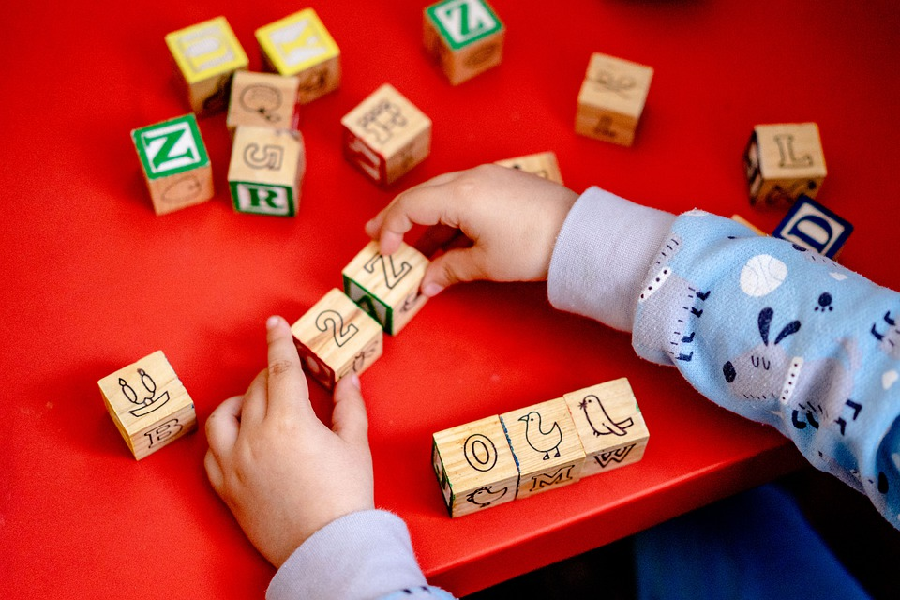
Follow us Now on Telegram ! Get daily 10 - 12 Interesting Updates. Join our Telegram Channel https://t.me/OhWomen
Download Telegram App before Joining the Channel
Sustainability is now an integral facet of our everyday lives. Being sustainable is no longer just advantageous, in fact, it's a vital business factor. A plan for sustainability is now a primary part of global business strategy also with toy manufacturers looking to implement ground-breaking sustainable approaches to respond to the surging demand for products that respect the environment as much as possible.
Sustainability is about comprehending and lessening the sources that go into the products we use, what happens to the cast-off packaging, and where they end up in the end. Sustainable toys and games that are made from good quality plastic or wire, sourced from responsible sources, or recycled material have been rapidly influencing the burgeoning toy industry.
Parents today are starting to witness value in training children on how to be eco-conscious and have been scouting for ways to instill the love for our planet. Introducing them to sustainable toys can surely help them learn the ways to care for our planet, thus setting the map for a sustainable future.
On average, an alarming ninety percent of a child's toy collection is perpetually and unknowingly filled with plastic toys. But if you are an accountable parent, you must shift to sustainable toys that are enduring and nontoxic for kids. Vick Rana, Group Chairman, Red Ridge Global Limited shares organic toys that can bestow your child with ample of benefactions:
Dough: Dough being gluten-free is made from rice flour, clay from mud and sand, parts made from 100% recycled pet material, containers from food-grade virgin plastic, packaging wrapped with dissolvable plastic, and printing and packing with soy ink instead of chemicals. Apart from hours of uncountable fun for your kids, some other advantages of playing with natural play dough include the development of fine motor skills, fostering creativity, enhancing hand-eye coordination, and improved social skills.
Recycled Pencils: Pencils made from 100 per cent recycled newspapers without cutting fresh trees to generate new paper are all set to substitute their wooden counterparts. It is estimated that every about 8 million trees are cut down to make around 2 billion pencils. In such times, sustainable pencils are saviours to the environment. Salvaged pencils are typically made of old newspapers that have been turned into workable mulch. This mulch then holds the graphite in place and is then baked for drying. They comprise water-soluble capsules which have seeds of herbs and vegetables, making the pencils plantable and helping in balancing the carbon footprint. Without any trace of wood, an old paper that goes to waste is reprocessed and rolled into pencils.
Steel/metal scooters/vehicles: These toy vehicles made from recycled zinc and plastic with just 1 per cent from non-recycled stainless steel, usually come in zero-plastic packaging made from paper and wood fibre. The foremost aim of hese toys is to increase environmental consciousness among children and to enable the next generation to steer us towards a sustainable future.
Wooden puzzles: Perhaps the most obvious advantage of a wooden jigsaw puzzle is that it is far more hard-wearing than a conventional cardboard puzzle. Owing to the material - wood, each puzzle piece tends to be stronger and more rigid. They are not subject to wear and tear like cardboard pieces, which are prone to get damaged and get tatty at the edges.
Additionally, the cutting-edge laser technology that goes into its making safeguards that wooden puzzle pieces fit together perfectly. As wood is more of a prime material to work with, and perfect for laser cutting, these puzzles come with added levels of intricacy, such as the detail on the fun-themed whimsy shapes that make them come alive.
Apart from these, sustainable toys that have been passed on from generation to generation include, chess made out of uncut, spare or scrap stones or marbles, board games, table games like carom boards, Gilli danda, Cloth puppets, woven/ sewn fabric balls, swings from tires on the trees and bamboo bats to name a few.
"Awareness of how to make sustainable choices while investing in toys has been growing. Although these green toys do benefit from being recyclable and bio-degradable, it is still vital for consumers to check if the product is from a certified sustainable source or not. It is important to do a thorough check of the ingredients or component materials labelled on the toys. The Bureau of Indian Standards (BIS) has instructed that all-electric and non-electric toys bear the ISI mark, and toys that are sole without an ISI mark are not permitted to be traded in the country. Hence while buying toys, it is important to check for toxicity, safety, and standard materials through the BIS mark for both electronic and non-electronic toys," says Vick Rana.
In the present era, it is challenging to keep a tab on everything that goes inside our kid's systems, nevertheless, at the same time, it is a delightful period because of the diversity of alternatives and accessibility as far as sustainability is concerned. Looking across the value chain for toys, the industry definitely perceives a future where toys are made from environmentally favoured materials, use less packaging materials, have scope for recycling, and can engage children in sustainable actions.
Source - IANS